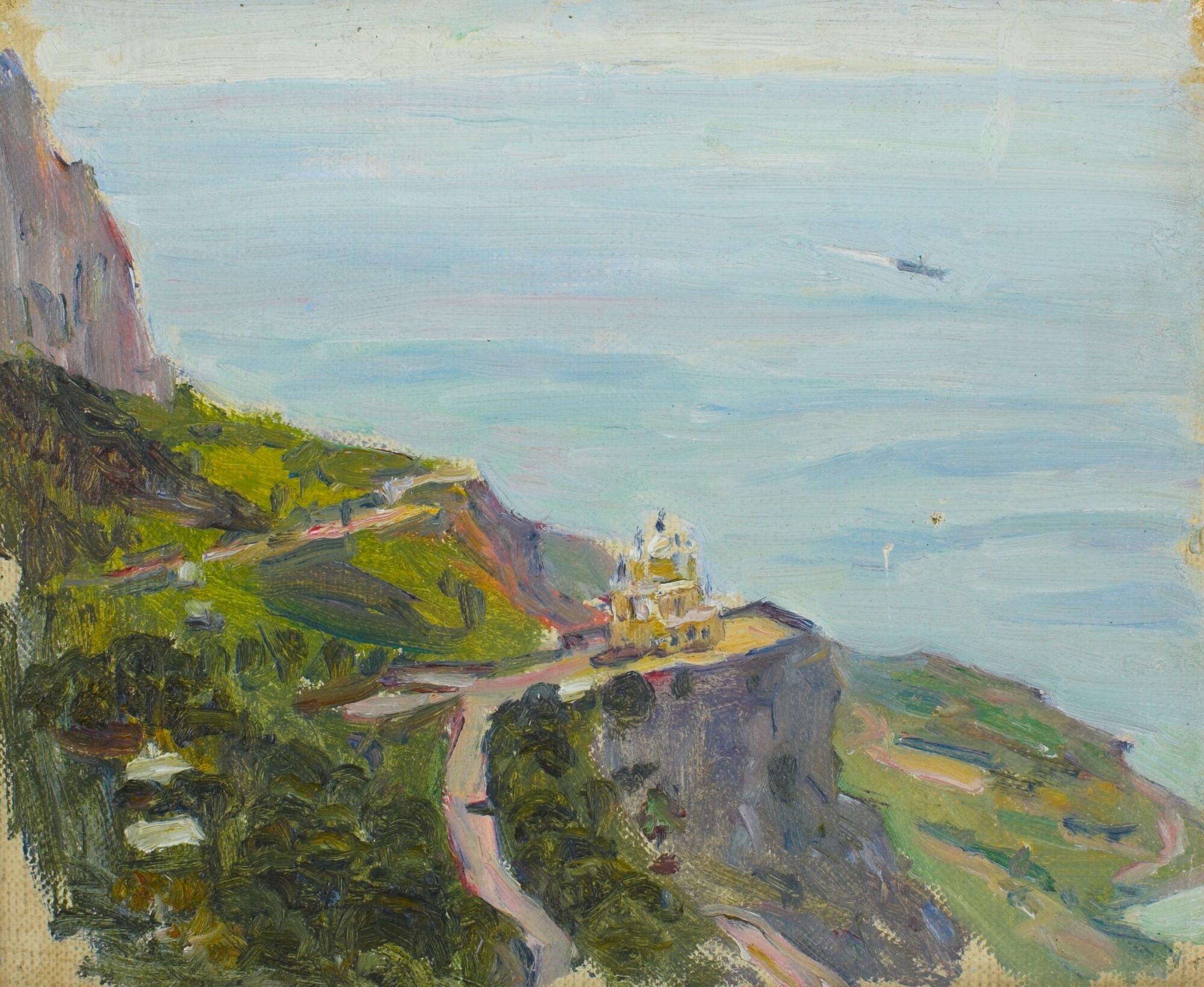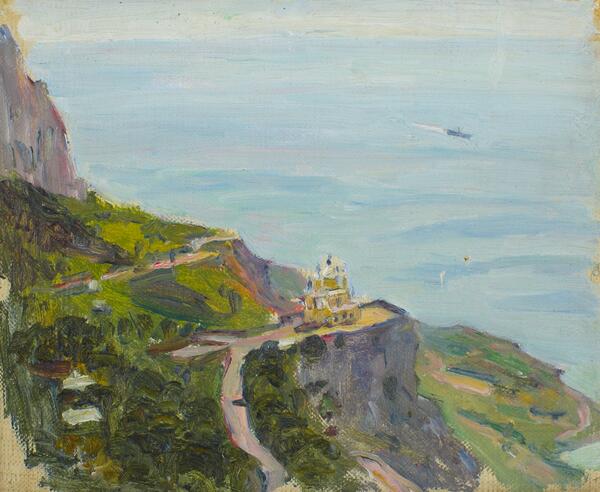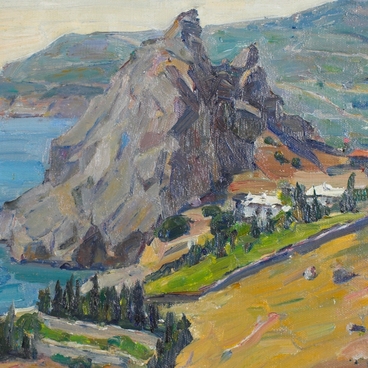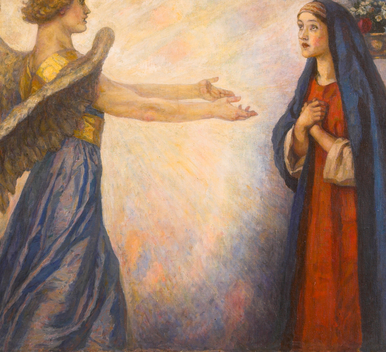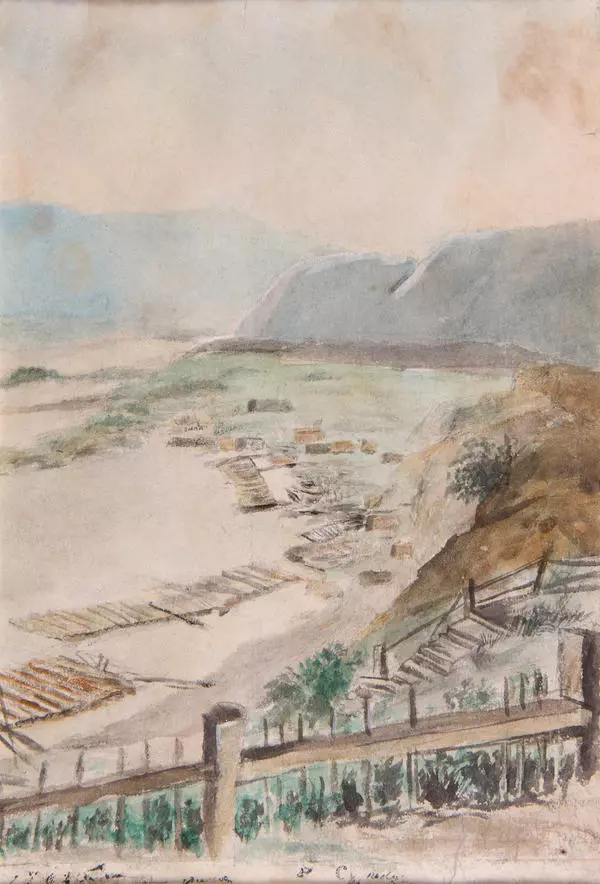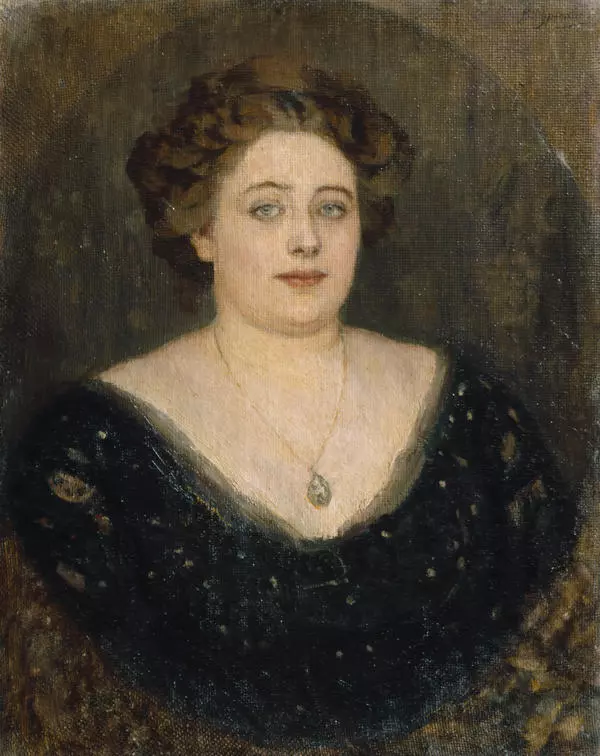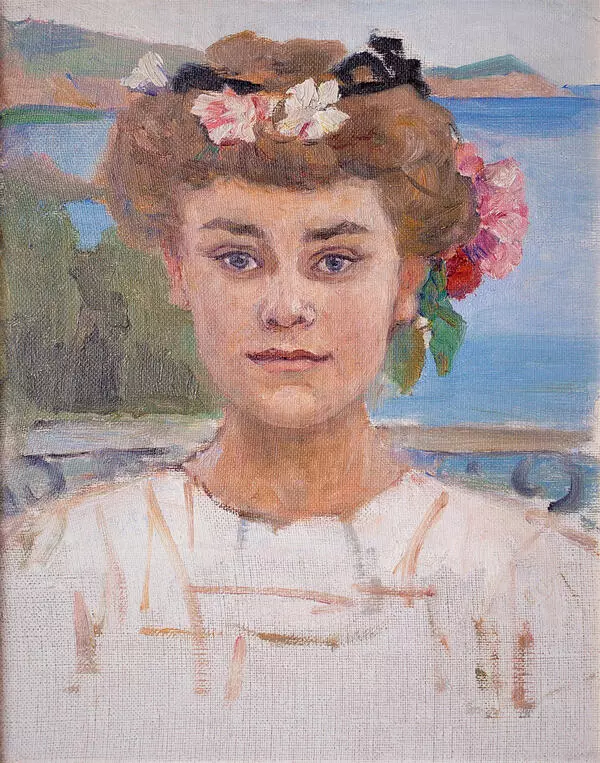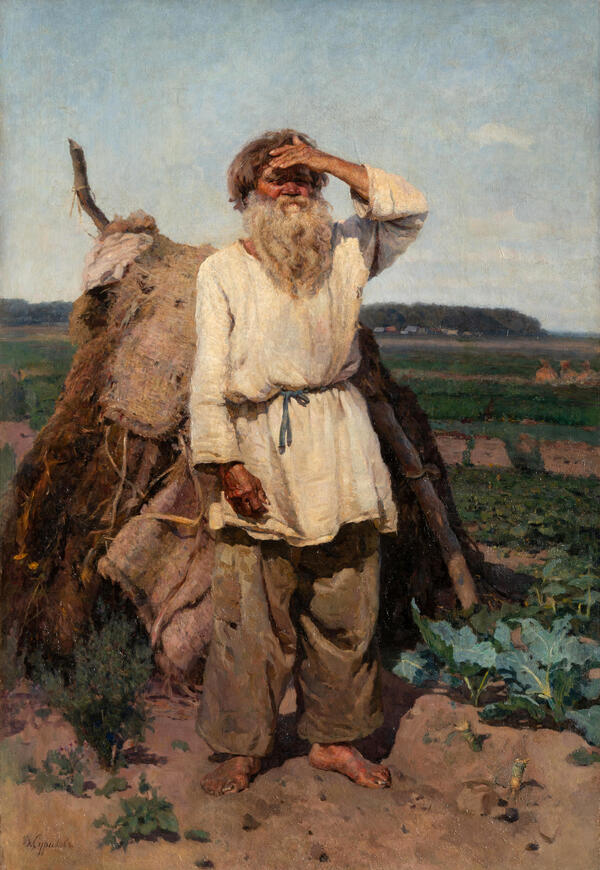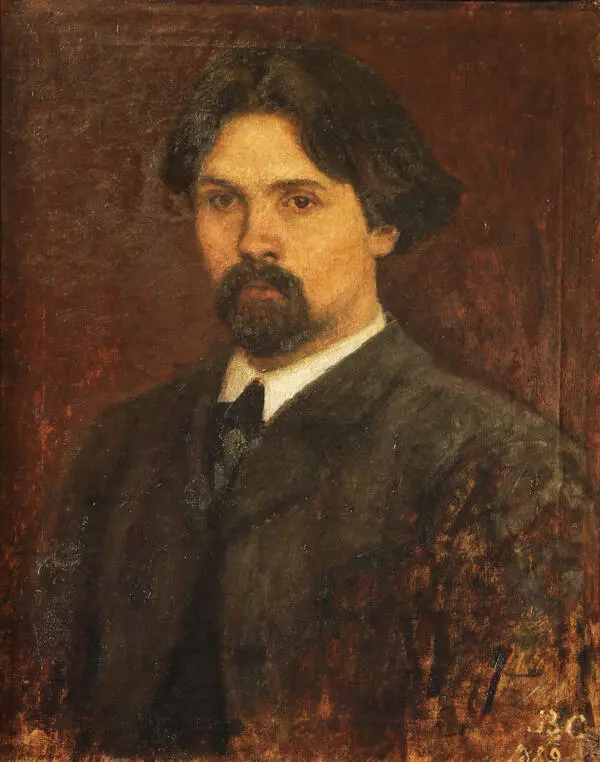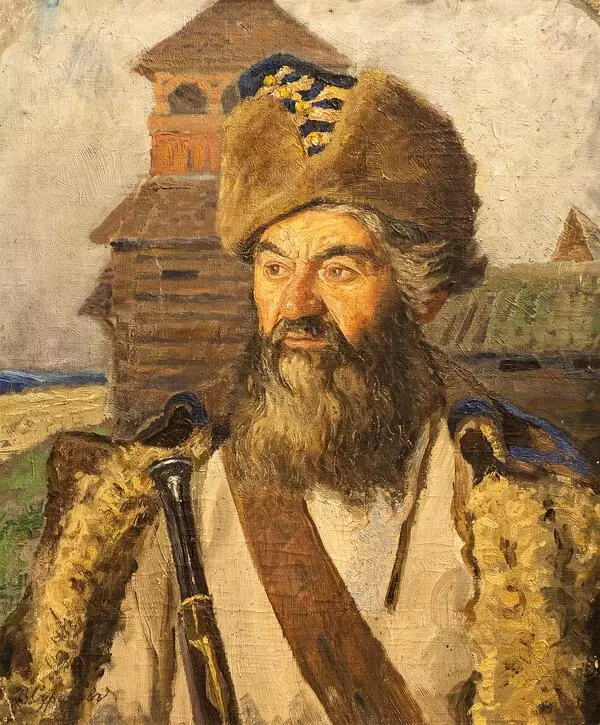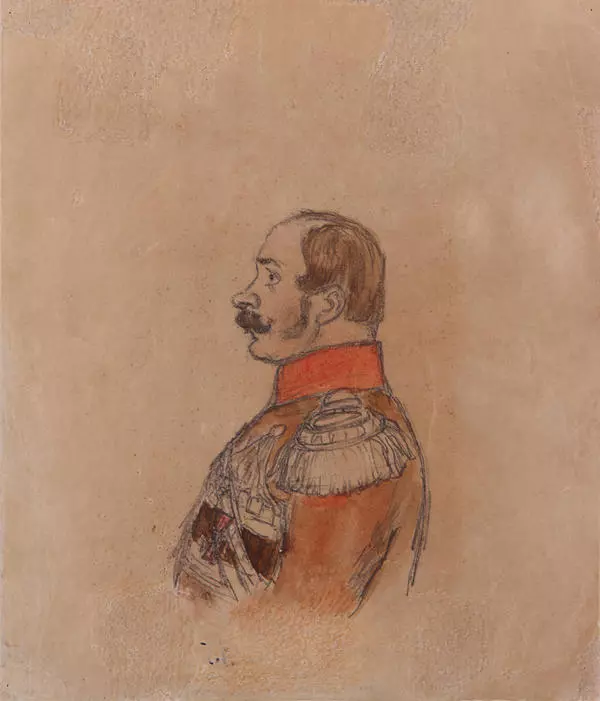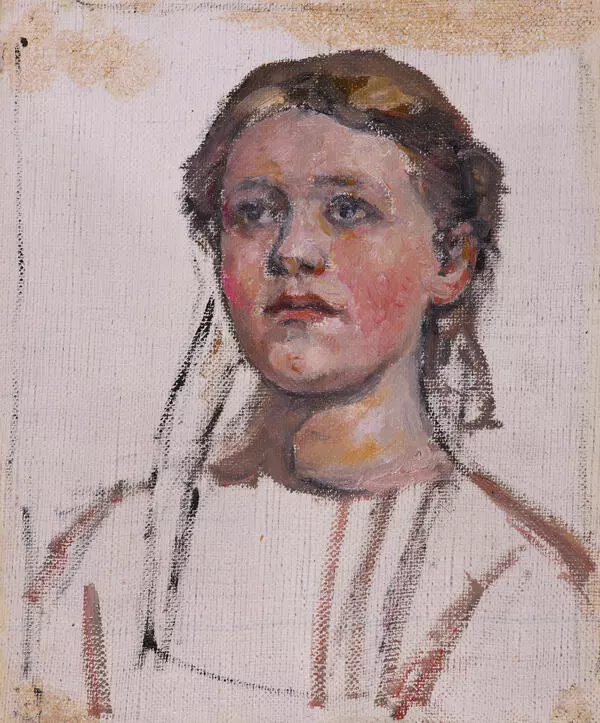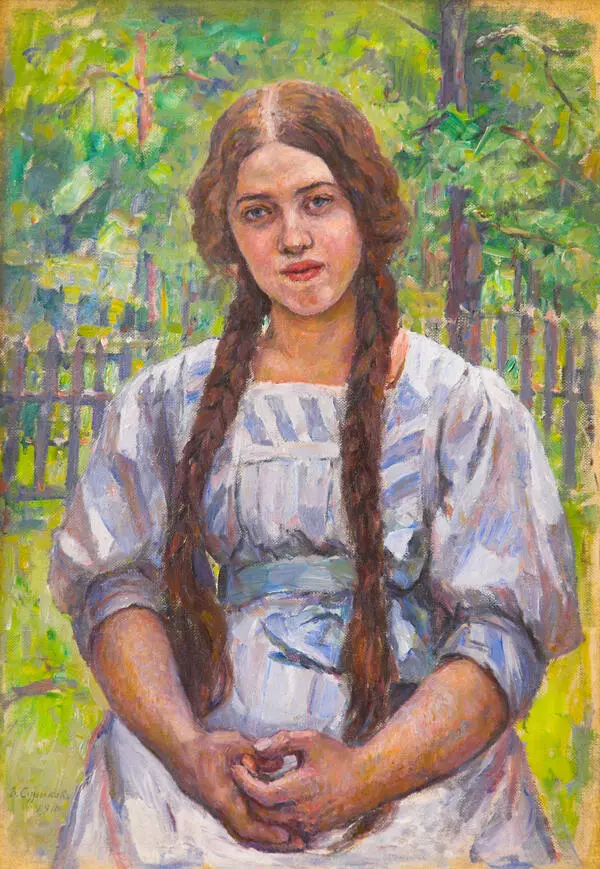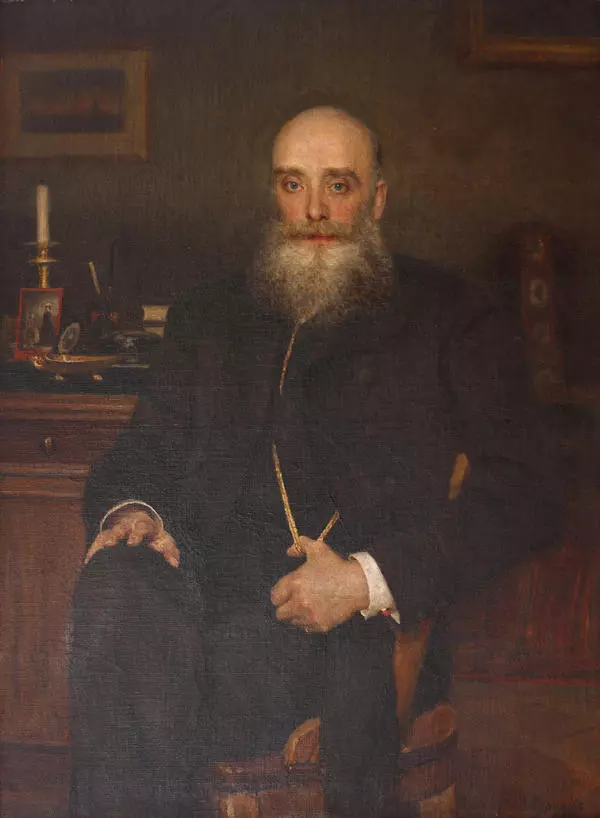Vasily Surikov’s artworks are usually associated with Siberia, where he was born and spent his childhood, with St. Petersburg, where he studied, with Moscow, where he lived and worked. His trips to Italy and Spain also influenced him as a colorist. The artist went to the Crimea many times, he loved this land very much for its sunny, boundless horizons, bright colors. The artist traveled along the whole of the southern coast of the Crimea — he visited Alupka, Simeiz, Gurzuf, Yalta. There is a photograph of him and his daughter where they were photographed on a viewing platform, with the rocks as a background. Here he painted portraits and landscapes, which played an important role in his creative career.
In 1908, Vasily Surikov and his daughter Elena went to the Crimea again. They went by train to Sevastopol, and then took a cabriolet — a light two-wheeled carriage — to get to Alupka. Surikov was afraid to go by car along the turns of the hundred-year-old mountain road, but he trusted the horse-driven carriages more. Along the way, the travelers visited the so-called “Swallow”s nest”, an unusual castle on the edge of a cliff. Soon the painter wrote to his brother in Krasnoyarsk: “Lena and I got a great sun tan, I painted about 20 sketches with the Crimean nature — they all have bright colors. It”s always sunny there. We travelled from Sevastopol on a horse-driven carriage to Alupka…”.
They rented rooms in a two-story wooden house decorated with thin metal lace. In the courtyard of the house there was a huge magnolia tree and a tall pyramidal cypress, resembling a cedar. At the same time, Surikov painted an oil sketch with the church in Foros. This church on the edge of a steep cliff and the vast panorama behind it, made the artist really astonished, and he immediately expressed his emotions on the canvas. Light plein-air painting, soft haze that hides the outline of the church, and endless horizons — everything is painted with rushing, long and round strokes. The color palette includes a variety of green, blue, yellow, pink tones and gives this small sketch a sense of lightness.
On the way back home, Surikov and his daughter stayed in Sevastopol: they visited the museum of the Sevastopol defense of 1854–1855 and looked at the monuments to the admirals.
In 1908, Vasily Surikov and his daughter Elena went to the Crimea again. They went by train to Sevastopol, and then took a cabriolet — a light two-wheeled carriage — to get to Alupka. Surikov was afraid to go by car along the turns of the hundred-year-old mountain road, but he trusted the horse-driven carriages more. Along the way, the travelers visited the so-called “Swallow”s nest”, an unusual castle on the edge of a cliff. Soon the painter wrote to his brother in Krasnoyarsk: “Lena and I got a great sun tan, I painted about 20 sketches with the Crimean nature — they all have bright colors. It”s always sunny there. We travelled from Sevastopol on a horse-driven carriage to Alupka…”.
They rented rooms in a two-story wooden house decorated with thin metal lace. In the courtyard of the house there was a huge magnolia tree and a tall pyramidal cypress, resembling a cedar. At the same time, Surikov painted an oil sketch with the church in Foros. This church on the edge of a steep cliff and the vast panorama behind it, made the artist really astonished, and he immediately expressed his emotions on the canvas. Light plein-air painting, soft haze that hides the outline of the church, and endless horizons — everything is painted with rushing, long and round strokes. The color palette includes a variety of green, blue, yellow, pink tones and gives this small sketch a sense of lightness.
On the way back home, Surikov and his daughter stayed in Sevastopol: they visited the museum of the Sevastopol defense of 1854–1855 and looked at the monuments to the admirals.
